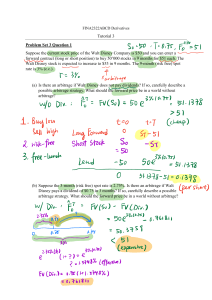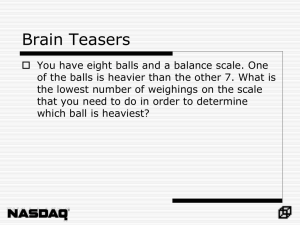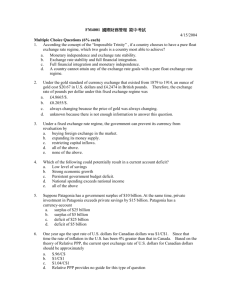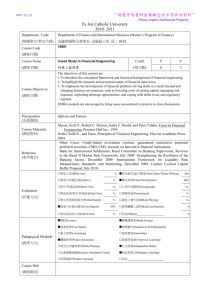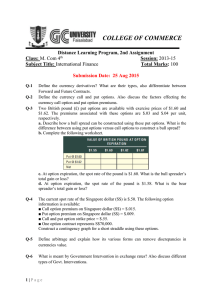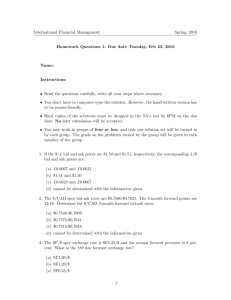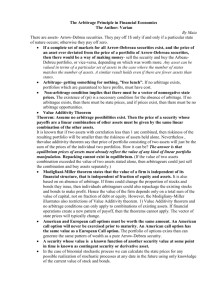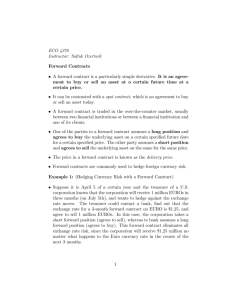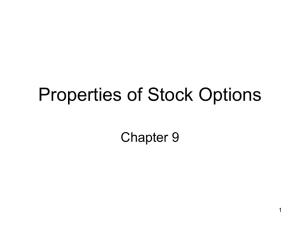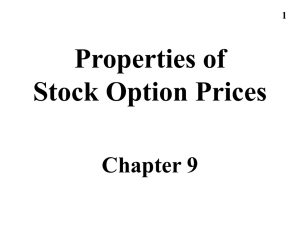Lecture 14 (POWER POINT)
advertisement
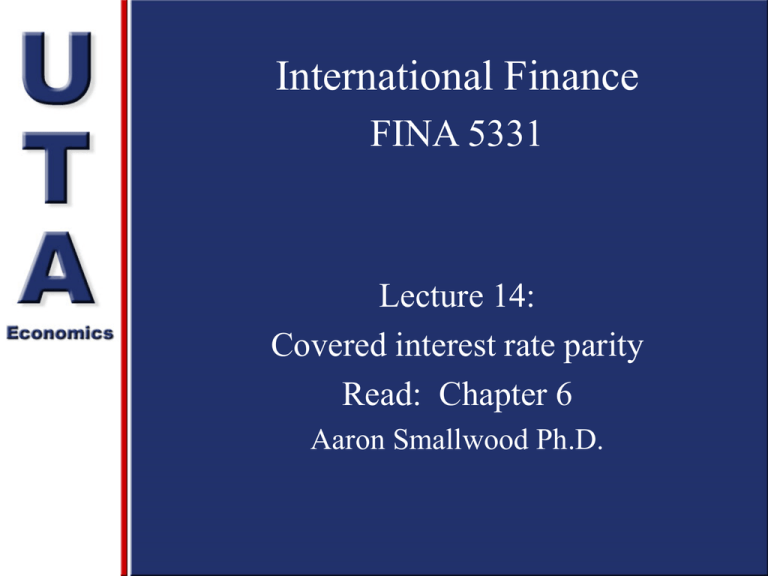
International Finance FINA 5331 Lecture 14: Covered interest rate parity Read: Chapter 6 Aaron Smallwood Ph.D. Implications • The no arbitrage condition implies: ~ ~* Ft 1 it 1 it St • The equation, known as the no arbitrage condition, has important implications. • To illustrate suppose the equation didn’t hold. • Example, suppose: • it: 6.00% (annualized interest rate in the US for an asset maturing in one month). • it*: 5.25% (annualized interest rate in Germany for a similar asset maturing in 1 month). • St: $1.36537 (dollar price of the euro on the spot market). • Ft: $1.30 (assume asset matures in 30 days time). An arbitrage opportunity exists: • First, interest rates are adjusted: • We have: 30 ~ it 0.06 0.005 360 30 ~* it 0.0525 0.004375 360 • As thus: ~ 1 it 1.005 1.30 ~* F (1 it ) t (1.004375) .956288 St 1.36537 • PROFIT TIME! How do we profit • Start by borrowing in the foreign country. Let’s do it big! Let’s borrow €10,000,000. – We will have to repay: – €10,000,000*1.004375= €10,043,750 • Note, as a result of our actions, demand for loanable funds in Germany increases. Foreign interest rates increase. • Convert euros and lend in the US. – €10,000,000*$1.36537 = $13,653,700. – Lend at .5% yielding: – 13,653,700*(1.005) = $13,721,968.50. • Note, two things happen here. On the spot market, supply of euros increases, driving down St. • Supply of loanable funds increases in the US, driving down it. Last step… • Finally, you use the pre-existing forward contract to sell the dollar proceeds for euros. The result: $13,721,968.50/1.30 = 10,555,360.38. Profit: €10,555,360.38 - €10,043,750 = €511,610.38. Note, in the final step, you sell forward dollars. You are buying forward euros. This likely causes, Ft to rise. No arbitrage opportunities? • NOT ONCE YOU HAVE LEFT THE MARKET! • Recall, our arbitrage opportunity existed because: ~ ~* F (1 it ) 1 it t St ~ S ~* (1 it ) t 1 it Ft • However, as a result of your actions: – – – – 1. 2. 3. 4. Foreign interest rates rise. The spot rate falls. Domestic interest rates fall. The forward rate rises. No arbitrage • Thus, we can expect astute traders will eliminate profitable arbitrage opportunities quickly when they exist. Thus, as a rule: ~ ~* Ft (1 it ) 1 it St • Implications: Suppose domestic interest rates fall as a result of, say, monetary policy. • To ensure equilibrium: – 1. Foreign interest rates must also fall… – 2. and/or The forward rate must fall. – 3. and/or…The spot rate must rise. An increase in the spot rate implies a DOMESTIC CURRENCY DEPRECIATION. Covered Interest Rate Parity • The no arbitrage condition is frequently rearranged in a more convenient way: ~ ~* it it Ft S t ~* St 1 it or ~ ~* Ft S t it it St Deviations from CIRP? • Transactions Costs – Without bid-ask spreads, it may have appeared that we could borrow in the domestic country. – The interest rate available to an arbitrageur for borrowing, ib,may exceed the rate he can lend at, il. – There may be bid-ask spreads to overcome, Fb/Sa < F/S – Thus (Fb/Sa)(1 + i¥l) (1 + i¥ b) 0 • Capital Controls – Governments sometimes restrict import and export of money through taxes or outright bans. • Taxation differences on capital gains.


